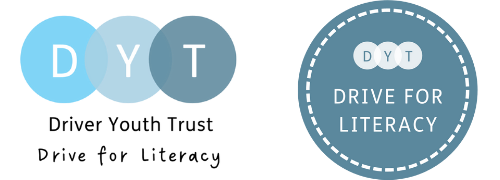#PositiveDyslexia Part 2: Ensuring Positive Practice
11/10/2017
Part 2 of DYT Consultant Teacher Nancy Gedge Blog Series reflects on Dyslexia Awareness Week and how teachers can embody and implement #PositiveDyslexia2017 in the classroom…
 Last week’s Dyslexia Awareness Week was a time to celebrate the endeavour of people with literacy difficulties and their perseverance, particularly in education. This year’s theme of Dyslexia Awareness Week was “positive dyslexia” and here at DYT, we thought about what this means for the children and young people in school today, in 2017.
Last week’s Dyslexia Awareness Week was a time to celebrate the endeavour of people with literacy difficulties and their perseverance, particularly in education. This year’s theme of Dyslexia Awareness Week was “positive dyslexia” and here at DYT, we thought about what this means for the children and young people in school today, in 2017.
There is considerable research literature around the self-perception of SEND young people (Glazzard, 2010, DfE, 2017), which points towards self-concept, that is, the image we have of ourselves as people – and in school, as learners – as an important part of achieving success. In simple terms, when we believe in ourselves, our ability to take on new challenges increases.
The confusion and distress felt by dyslexic children and their families is well documented. As is, increasingly, the role that teachers play in helping children understand their difficulties, and work towards overcoming them, while maintaining that essential positive view of themselves as people who can achieve and learn.
So, what can teachers do? Here at DYT we have put together a two-part series of blogs on how teachers can help dyslexic children and young people be positive about dyslexia. Last week I looked at the initial steps teachers can take to be a role model and encourage positive self-perception. This week, I’d to identify three more ways teacher’s can embody positive dyslexia.
Recognise the signs
There are debates over whether or not dyslexia exists, but this doesn’t help the child with literacy difficulties. Neither does telling them that their problems are a figment of their imagination or purely the result of bad teaching.
Don’t dismiss the difficulties your students are facing, learn to recognise the signs of dyslexia and get specialist support for them if necessary. School screening and tracking systems can do much to help schools to catch at risk learners before they fall through a learning crack.
Ensure access
The Equality Act (2010) places a duty on educational organisations, employers and those who provide public facilities to ensure that adjustments are made to ensure that people with impairments are able to access goods and services (Glazzard & Dale, 2013). It is built on the social model of disability (link to fact sheet) (Oliver, 1996) which challenges the traditional medical model of disability which sees the disability as located within the person, who becomes someone to be ‘fixed’ and changed.
Teachers can do much to remove barriers for dyslexic learners (link to Jules’ videos on assistive tech), not only through supports, but also in lesson and task design, especially as learners get older and closer to GCSEs and A Level exams.
Own the label
It’s impossible to have a conversation about labelling and diagnosis without mentioning the ‘double edged sword’ nature of the process, but there is evidence to show (Glazzard, 2010) that knowing what is going on inside, being able to put a name to it, has a powerful positive effect for individuals with Dyslexia. Understanding who you are, and why you find some things harder than others is a huge step towards overcoming a barrier to learning – therefore, a step towards understanding, and learning to love, yourself.
Drive for Literacy
Raising academic standards for learners is the raison d’etre for all schools, and we believe that SEND learners are an essential part of this picture. Our flagship programme, Drive for Literacy (DfL), is a collaboration between policy and practice and is informed by the evidence of our research. It is a whole school model for literacy, built around the Graduated Approach and starting from Quality First Teaching. Its aim is to build teacher capability and school capacity to identify and support learners who struggle with reading, writing, speaking and listening.
Any learning difficulty or disability makes life in school more challenging, but this doesn’t mean that dyslexic learners, or any other kind of SEND learner for that matter, has to feel negative about themselves. #Positivedyslexia gives us all a chance to reflect on what we can do to enable young people to believe in themselves and face their futures, and future challenges, with resilience.

References
Department for Education (2017) The wellbeing of secondary school pupils with SEN, https://www.gov.uk/government/publications/the-wellbeing-of-secondary-school-pupils-with-sen
Equality Act (2010) Part 2: Equality: Key Concepts, National Archives, http://www.legislation.gov.uk/ ukpga/2010/15
Burns, E. & Bell, S. (2011) ‘Narrative construction of professional teacher identity of teachers with dyslexia.’ Teachers and Teaching: Theory and Practice, 27, pp. 952–60
Butkowsky, L. S. & Willows, D. M. (1980) ‘Cognitive-motivational characteristics of children varying in reading ability: evidence for learned helplessness in poor readers.’ Journal of Educational Psychology, 72 (3), pp. 408–22.
Chan, L. K. S. (1994) ‘Relationship of motivation, strategic learning and reading achievement in grades 5, 7 and 9.’ Journal of Experimental Education, 62 (4), pp. 319–39
Gedge, N (2016) ‘Inclusion for Primary School Teachers’ London: Bloomsbury
Glazzard,J & Dale,K (2013) ‘Trainee teachers with dyslexia: personal narratives of resilience’ Journal of Research in Special Educational Needs 13 (1), pp26–37
Glazzard, J. (2010) ‘The impact of dyslexia on pupils’ self-esteem.’ Support for Learning, 25 (2), pp. 63–9.
Gurney, P. W. (1988) Self-Esteem in Children with Special Educational Needs. London: Routledge.
Humphrey, N. & Mullins, P. (2002b) ‘Personal constructs and attribution for academic success and failure in dyslexia’.’ British Journal of Special Education, 29 (4), pp. 196–203.
Oliver, M. (1996) Understanding Disability: From Theory to Practice. Basingstoke, UK: Macmillan.
